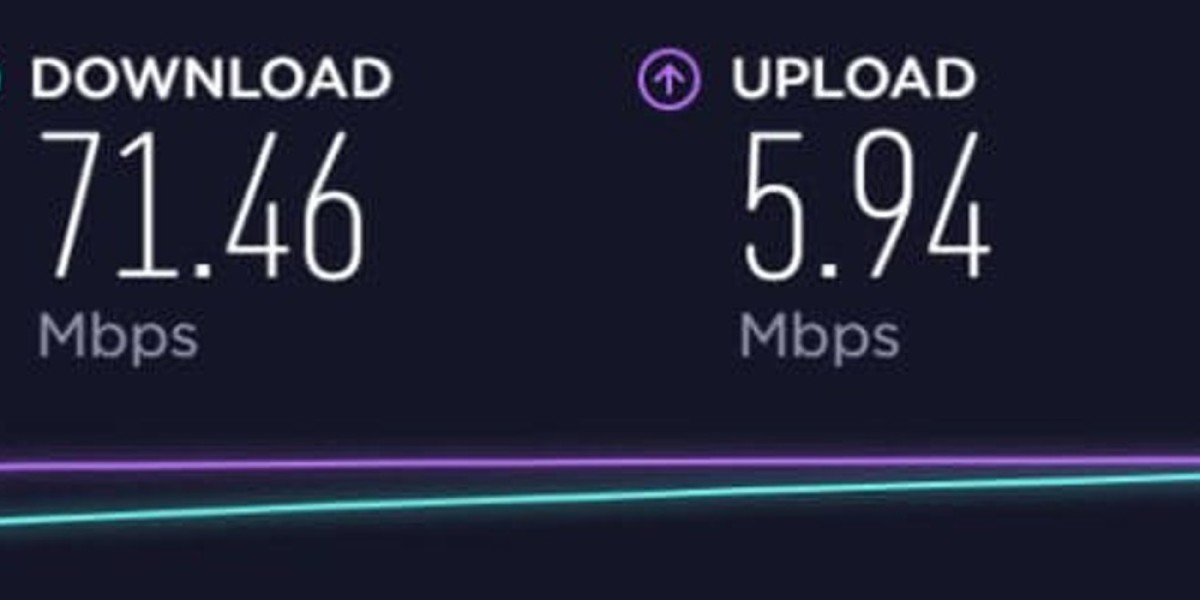Understanding Broadband Jargon
With the ongoing debate over net neutrality, many consumers are encountering a barrage of unfamiliar tech terms. Words like throttling, broadband, DSL, fiber, upload, and download speeds can be bewildering. For those looking to choose an internet plan, it's challenging to sift through the jargon and determine what’s truly important. Often, the information comes from ISPs trying to sell their services, making it hard to know who to trust.
Fortunately, you don't need to be a networking expert to grasp the essentials. This guide aims to clarify these terms and explain why they matter when you're shopping for broadband services.
Understanding Internet Speeds and Terminology
Internet speed is a measure of how quickly data can be transferred over the web. It's typically measured in bits, with kilobits being the smallest unit and megabits the most common. However, many ISPs now offer gigabit speeds, which are incredibly fast—fast enough to download HD movies in seconds.
For most people, the focus will be on broadband, as it provides high-speed, always-on internet, which is the standard for most consumers today.
From a basic standpoint, internet speed determines how quickly you can download or upload data. For example, if you want to stream a video from Netflix in HD without buffering, you need a certain minimum speed.
To get a better understanding of your current internet speed, you can use one of several websites to measure it. This can be a helpful starting point for grasping internet speeds and related terms.
Understanding Your Internet Connection: Speed Metrics and Terminology
When evaluating your internet service, conducting multiple speed tests can provide valuable insights into your actual connection performance. For a more practical assessment, try downloading legitimate software packages and noting the completion times. Establishing this baseline knowledge of your current internet speed will help you better understand the technical concepts discussed below.
The term "broadband" is commonly used in everyday conversations about internet service, typically serving as shorthand for "high-speed internet access." While this simplified definition works for most practical purposes, it's worth noting that the specific speed thresholds that qualify as "broadband" are not fixed. Regulatory bodies like the Federal Communications Commission (FCC) periodically revise these standards to reflect technological advancements and changing consumer needs.
Broadband refers to high-capacity data transmission networks enabling continuous connectivity
and significantly faster speeds than traditional dial-up (narrowband) internet.
These two core features—persistent availability and enhanced performance—define its basic framework.
Internet Service Providers (ISPs) deliver broadband through diverse technologies,
ranging from cable and fiber-optic infrastructure to wireless solutions.
While names like Comcast, Sky, and Verizon are widely recognized as cable-based ISPs,
mobile carriers such as T-Mobile and Sprint now also qualify due to advancements in 3G/4G networks.
The term “broadband” lacks strict technical standardization, allowing ISPs to market services under this label
even when speeds or reliability may not align with consumer expectations.
This ambiguity often leads to misunderstandings, as users assume “broadband” guarantees high performance
despite minimal regulatory criteria.
Modern ISPs encompass not only traditional telecom giants but also cellular companies expanding into mobile broadband,
blurring the lines between fixed and wireless internet access providers.
Australia’s national broadband strategy centers on a government-operated network
where providers resell connectivity to users. Current targets aim for 25 Mbps minimum nationwide,
with 90% of locations qualifying for 50 Mbps services.
The U.K. established 10 Mbps as a legally guaranteed speed floor in 2020,
a significant jump from its earlier 2 Mbps universal service obligation.
British regulators classify connections surpassing 24 Mbps as “superfast” tier.
Canada’s aspirational 50 Mbps download goal lacks legal enforcement,
though its telecom authority recognizes reliable internet as essential for civic participation.
No federal speed mandates exist despite publicized accessibility targets.
U.S. broadband standards currently sit at 25/4 Mbps, though proposals exist
to downgrade the baseline to 10 Mbps for download speeds.
Policy shifts continue to spark debate about adequacy for modern usage.
Globally, infrastructure ownership models vary widely – from state-managed networks
to privatized systems – impacting service availability and pricing structures.
Broadband internet access technologies have evolved significantly over the years, with various methods available to deliver high-speed internet. While the specific requirements and speeds can differ from one country to another, the core technologies remain largely the same. Researchers and engineers continually innovate to improve these technologies, aiming to provide even faster and more reliable internet connections.
One of the early broadband technologies that succeeded dial-up internet was DSL, or Digital Subscriber Line. Dial-up internet, known for its screeching sounds, was a common method before DSL. DSL uses traditional copper telephone lines to deliver high-speed internet. Although DSL can theoretically provide speeds up to 100 Mbps, the actual average speeds are often much lower, typically ranging from 128 Kbps to 2 Mbps.
DSL encompasses several different technologies, including:
ADSL (Asymmetric Digital Subscriber Line)
ADSL is a popular form of DSL that prioritizes download speeds over upload speeds. This makes it ideal for residential users who primarily use the internet for downloading content. ADSL was first introduced in 1998, offering 8 Mbps download speeds. The current version, ADSL2+, can provide up to 24 Mbps download speeds. However, ADSL is less common and can be more expensive per bit rate compared to other options. It has the advantage of allowing both internet and voice services on the same line, eliminating the need for a second telephone line.
There are several variants of ADSL, such as RADSL, which adjusts bit rates based on line conditions, and ADSL Lite, which offers lower bit rates and a shorter range, typically around 18,000 feet from the service provider.
SDSL (Symmetric Digital Subscriber Line)
In contrast to ADSL, SDSL provides equal download and upload speeds, making it suitable for users who need to upload large amounts of data. SDSL requires a separate phone line for the service to function and has a shorter range, typically around 10,000 feet from the service provider.
Other symmetric DSL technologies include HDSL (High-bit-rate Digital Subscriber Line), which offers slightly faster speeds than SDSL, and VDSL (Very-high-bit-rate Digital Subscriber Line), which provides the fastest DSL speeds of up to 100 Mbps but has an extremely short range of only about 300 feet from the provider.
In terms of global availability, DSL is more commonly found in Australia compared to countries like the United States, Canada, and the United Kingdom. In many regions, DSL has been replaced by cable, fiber optic, or satellite internet services.
Global Internet Connectivity Options
In numerous regions globally, cable-based broadband remains the dominant connectivity choice for households
Providers often bundle these services with television packages, particularly in North America and European markets
Coaxial connections, similar to those used in television setups, enable data transmission through hybrid copper-core wiring
These specialized cables outperform traditional phone lines in bandwidth capacity due to their layered insulation design
Modern hybrid networks merging coaxial infrastructure with fiber-optic backbones achieve multi-gigabit performance levels
Actual user speeds depend on channel allocation – simultaneous data pathways increase cumulative throughput capabilities
Subscribers can optimize connections by accessing providers offering expanded upstream/downstream channel configurations
For remote areas lacking terrestrial infrastructure, orbital networks provide alternative connectivity solutions
Geosynchronous satellites maintain fixed positions relative to Earth, enabling constant signal transmission
This space-based system mirrors satellite television technology with continuous two-way data exchange requirements
Environmental factors significantly impact satellite performance – heavy precipitation or physical obstructions disrupt signals
Latency challenges persist due to the 35,786km roundtrip between user dishes and orbiting spacecraft
Understanding Internet Connectivity Options: A Comprehensive Guide
Internet connectivity has evolved significantly over the years, offering various options to meet different needs across diverse geographical locations. Whether you live in an urban metropolis or a remote rural area, understanding the available technologies can help you make informed decisions about your internet service.
Fiber Optic Internet: The Gold Standard
Fiber optic technology represents the pinnacle of internet connectivity, transmitting data via light signals through glass fibers approximately the width of a human hair. This revolutionary approach enables extraordinary speeds with virtually limitless potential. While gigabit connections are now commercially available, laboratory tests have demonstrated capabilities reaching 255 terabits per second—enough bandwidth to download hundreds of HD movies in a single second.
The primary limitation of fiber isn't technological but geographical. Deployment requires significant infrastructure investment, making it predominantly available in densely populated urban areas where providers can achieve favorable returns on investment.
Mobile Broadband: Connectivity on the Go
Mobile data networks have transformed how we access the internet while away from fixed connections. The evolution from 3G to 4G has dramatically improved performance, with 4G connections typically delivering around 14 Mbps but capable of reaching 100 Mbps under optimal conditions.
The LTE designation indicates enhanced 4G performance, while the emerging 5G technology promises revolutionary improvements. Using repurposed television signal frequencies, 5G aims to deliver baseline speeds of 1 Gbps with potential peaks of 4-5 Gbps. However, 5G signals have shorter range, requiring more transmission towers and potentially limiting rural deployment.
Satellite Internet: Connecting Remote Locations
For rural communities beyond the reach of traditional infrastructure, satellite internet provides essential connectivity. While average download speeds historically hover around 1 Mbps, newer satellite systems are dramatically improving performance—though often at premium prices. Despite limitations including potential line-of-sight issues and weather-related disruptions, satellite technology remains vital for bridging the digital divide in remote areas.
WISPs: The Rural Alternative
Wireless Internet Service Providers (WISPs) represent another solution for underserved communities. Using technologies like WiFi mesh networks or tower-mounted dishes transmitting over ultra-high-frequency bands, WISPs can deliver internet access where wired options are unavailable. Though typically limited to speeds around 15 Mbps, these services fill crucial connectivity gaps in the digital landscape.
Understanding Internet Speed
When evaluating internet options, understanding "speed" is essential. This term refers to how quickly you can transfer data, measured in both download and upload rates. Download speed—how quickly you can receive information—is typically most important for everyday users streaming content, browsing websites, or downloading files. Upload speed becomes crucial for activities like video conferencing, cloud backups, or content creation.
The digital divide between urban and rural communities remains a significant challenge, with economic factors often determining where high-speed infrastructure is deployed. While technological advances continue to improve connectivity options, geographical and financial constraints still influence which solutions are available in different locations.
Understanding Internet Speed
The speed of your internet connection is determined by the number of bits of data it can transfer in one second. A bit, short for binary digit, is the smallest unit of computer information, represented as either a 0 or a 1. This binary system forms the basis of all digital information, similar to how DNA is the basic building block of life.
To make sense of this, imagine a bit as a single piece of a puzzle. Individually, it doesn't convey much, but when combined with many other bits, it forms a complete picture. When you organize and combine these bits in specific ways, they create meaningful data. The more bits, the more information. For example, larger files are made up of more bits. As file sizes grow, they are often measured in bytes, which are groups of 8 bits.
When streaming a movie on Netflix in standard definition, your internet connection needs to download at a rate of 3 megabits per second (Mbps), or 3 million bits per second. If the speed drops below this, you may experience buffering, a common issue where the video pauses to load more data.
You might also come across measurements in megabytes (MB). Megabytes are usually denoted with a capital B (MB/s) rather than a lowercase b (Mbps). Internet service providers typically use Mbps to measure internet speeds. To convert Mbps to MB/s, divide the Mbps by 8. For instance, 25 Mbps divided by 8 equals 3.12 MB/s.
With today's computers having ample storage, websites rarely mention file sizes. However, mobile devices, which have limited space, often provide file size information, especially for apps. You can find these sizes listed in megabytes on app stores.
When exploring broadband plans offered by service providers
you'll notice connection rates are typically listed as Mbps (megabits per second)
This measurement differs from megabytes used for file sizes
creating occasional confusion for consumers
ISP websites universally employ this standardized metric
to denote theoretical maximum speeds for streaming
gaming
and downloading across various subscription tiers
The ideal internet speed largely depends on your online activities. For basic web browsing, a speed of 5 Mbps or less is often sufficient. However, if you frequently stream videos, listen to music, or play online games, you'll need more bandwidth and faster speeds.
For streaming, Netflix suggests the following minimum speeds:
- 0.5 Mbps for very low-quality video (expect frequent buffering)
- 1.5 Mbps for low-quality video (some buffering may occur)
- 3.0 Mbps for standard definition (SD) video
- 5.0 Mbps for high definition (HD) video
- 25 Mbps for ultra-high definition (UHD) video
While higher speeds are generally better, it's possible to purchase more than you actually need. Internet speed is just one factor in how quickly you can download or upload data and whether you experience buffering. Other important factors include ping and latency.
Ping and latency are key concepts that affect your internet performance, especially when using a virtual private network (VPN). Ping is the signal your device sends to another device, typically a website or service. Latency is the time it takes for the other device to respond to your ping. Lower ping and latency numbers indicate a faster and more reliable connection.
In most cases, response times are measured in milliseconds, with lower numbers being better. A strong and fast connection means both ping and latency are low, ensuring a smooth and efficient online experience.
Latency and bandwidth form the backbone of your online experience
but their effects vary based on usage. Imagine bandwidth as pipe capacity—
wider pipes allow more data flow, while congested pipes slow everything down.
Streaming 4K movies or video calls demand high bandwidth, but even a robust
connection can falter if too many devices drain resources simultaneously.
Physical distance and connection types shape latency. Wireless setups like satellite
introduce delays as signals traverse vast distances, while fiber optics minimize lag.
Real-time activities—gaming, live broadcasts, or virtual meetings—crumble under high latency,
causing audio-video mismatches or unresponsive controls. Yet checking emails or reading articles
often goes unaffected, requiring minimal data exchange.
Peak hours strain shared ISP networks, throttling speeds despite "up to" promises in your plan.
Your neighbor’s binge-watching might hog bandwidth, but so can regional network traffic jams.
Tools like Ethernet cables or router upgrades can optimize home networks, yet ISP-level congestion
remains beyond your control. Testing speeds during off-hours versus evenings often reveals this gap.
In gaming, latency isn’t just about lag—it alters competitive dynamics. A split-second delay
might turn a winning move into a missed opportunity, highlighting why low ping matters.
Meanwhile, buffering during streaming often signals bandwidth scarcity, not just slow servers.
Balancing these factors—choosing wired connections, limiting background apps—can sharpen performance,
blending speed and stability for smoother digital interactions.
Factors Affecting Internet Performance
Many factors influence real-world internet performance beyond your plan’s headline speed.
Start by examining your hardware setup: modems decode ISP signals, while routers distribute connectivity. Outdated equipment can bottleneck even premium fiber or cable services.
Network congestion stems from contention ratios – the user-to-bandwidth ratio in your area. Lower ratios (e.g., 20:1) mean less speed dilution during Zoom calls or 4K streaming marathons.
ISPs frequently throttle bandwidth during peak hours to manage traffic, prioritizing stability over speed guarantees. Infrastructure upgrades often lag behind data consumption trends, forcing users into pricier tiers for reliable performance.
Before blaming your ISP, assess device capabilities. A decade-old laptop with 4GB RAM struggles to render modern webpages efficiently, regardless of your 1Gbps connection.
Advertised speeds represent lab-tested maximums under ideal conditions. Real-world results typically hit 30-50% of these figures due to WiFi interference, background updates, and neighborhood usage patterns.
Pro tip: Run speed tests via Ethernet cables to isolate whether slowdowns stem from ISP limitations or local hardware/connection issues.
Wired internet services like DSL, fiber, or cable
typically require a modem to function properly.
For wireless connectivity throughout your home,
a router is essential to distribute the signal
to devices like phones, laptops, or smart TVs.
Internet providers often push customers to rent
their equipment, but this can cost $10+ monthly
with no long-term ownership—a hidden expense.
Investing in a compatible modem upfront (usually $80–120)
pays off within a year, offering annual savings
and flexibility to relocate the device when moving.
Always verify modem compatibility with your ISP’s network
and compare retailer prices before purchasing.
Some providers overcharge for their own hardware.
A few ISPs enforce mandatory modem rentals—
confirm their policies beforehand to avoid surprises.
Directly connecting a single device to a modem works,
but most households rely on routers for multi-device access.
Wireless routers are essential for broadcasting your internet to all devices within a specific range. The coverage area depends on the router's strength, with pricier models usually offering a broader range. If your devices can pick up a WiFi signal, they should work with your router.
However, some routers may slightly reduce your internet speed. This decrease is usually minimal, but if you experience significantly slower speeds than what your Internet Service Provider (ISP) promises, consider upgrading your router. It might be that your current router lacks the necessary channels or advanced technology to support faster speeds. If the signal doesn't reach everywhere in your home, you may need to either upgrade your router or find ways to extend its range.
A mesh WiFi system, such as Google Wi-Fi, can provide better coverage and stronger signals throughout your home. This system uses multiple wireless routing devices placed around your living space, creating a "wireless mesh network" for enhanced connectivity.
Like modems, ISPs often offer to rent you a router. However, it's always more cost-effective to buy your own router instead of renting one from your ISP. A good router can cost less than $100, and you'll save money each month. Most modern routers are compatible with most ISPs, but it's wise to check with your provider before purchasing.
If you use your own router, make sure to change the default username and password to enhance security. Unsecured routers can pose significant security risks, allowing unauthorized access to your home network and potentially leading to data theft.
The term “WiFi” generally refers to any wireless data signal, such as the one from your home router or a public hotspot at a coffee shop. However, not all wireless data is WiFi. For example, 3G or 4G data connections are wireless but not considered WiFi. WiFi is a specific technology used for wireless local area networks, like your home router or a mobile hotspot.
To further secure your home network, consider using a Virtual Private Network (VPN). VPNS can help protect your broadband internet from data thieves and ISPs, ensuring your online activities remain private and secure.
What is a Netflix VPN and How to Get One
A Netflix VPN is a service that enables viewers to bypass geographical restrictions, granting access to exclusive content libraries from various regions. By masking the user’s IP address and routing traffic through international servers, a Netflix VPN unlocks shows and movies unavailable in their local catalog. This tool is popular among users seeking expanded entertainment options or overcoming regional licensing limitations on the platform.
Why Choose SafeShell as Your Netflix VPN?
If you want to access region-restricted Netflix content seamlessly, SafeShell VPN is a top-tier choice for unblocking global libraries. Its high-speed servers are specifically optimized for streaming, ensuring Netflix unblocked without buffering or lag. Whether you’re binge-watching in HD or exploring niche regional shows, SafeShell’s lightning-fast connections eliminate interruptions, delivering a smooth viewing experience that keeps up with your entertainment demands.
SafeShell VPN simplifies multi-device streaming by allowing simultaneous connections on up to five devices, including smartphones, tablets, smart TVs, and more. The exclusive App Mode feature further enhances flexibility, enabling access to multiple regional Netflix libraries at once. This means you can switch between US, UK, or Japanese content effortlessly, all while enjoying compatibility across diverse platforms like iOS, Android, and Apple TV.
Beyond performance, SafeShell prioritizes security with its proprietary ShellGuard protocol, shielding your data from third-party tracking. Coupled with military-grade encryption, it guarantees private browsing alongside Netflix unblocked capabilities. To top it off, the risk-free trial plan lets you test its premium features firsthand, proving why SafeShell is a reliable ally for both entertainment and online safety.
A Step-by-Step Guide to Watch Netflix with SafeShell VPN
Unlocking global entertainment has never been easier with SafeShell Netflix VPN , your passport to accessing region-restricted content on the world's most popular streaming platform. To begin your journey, first visit SafeShell VPN's official website and select a subscription plan that aligns with your viewing habits and budget. After completing your purchase, download the appropriate application for your device – whether you're using Windows, macOS, iOS, or Android – and install it following the on-screen instructions.
Once installation is complete, launch the SafeShell VPN application and log into your account using your credentials. For the optimal Netflix streaming experience, select the APP mode when prompted to choose your preferred connection method. Next, browse through the server list and select a location in your desired Netflix region – popular choices include servers in the United States, United Kingdom, or Canada for their extensive content libraries. Simply click the connect button and wait for the secure connection to establish.
With your SafeShell VPN connection active and secure, you're now ready to access Netflix's global content library. Open your Netflix application or navigate to the website in your browser and sign in with your regular Netflix account credentials. You'll notice that the content library has transformed to display shows and movies available in your selected region. Sit back, relax, and enjoy unlimited streaming access to previously geo-restricted Netflix content through your SafeShell Netflix VPN connection, all while maintaining your online privacy and security.



